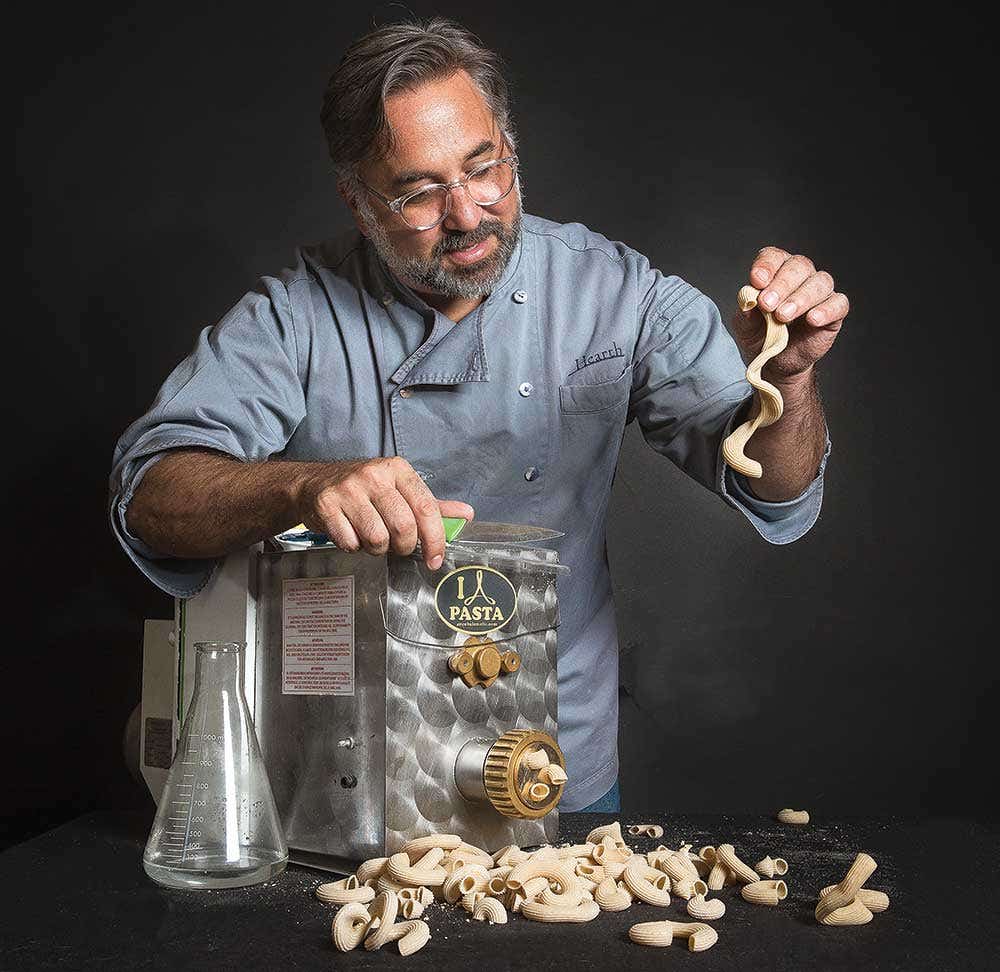
Marco Canora is Showing Just How Great Whole Wheat Pasta Can Be
The health-conscious chef of Hearth in New York is milling his own flour for superior nutrition—and flavor
The pastas served at New York's Hearth begin as whole grains—berries of farro, blue durum, and red fife trucked in from Upstate. Those grains are milled into flour, made into dough, pressed into shape through a gleaming Arcobaleno extruder, and boiled fresh. Working on a batch of rigatoni, chef Marco Canora rattled off the proportions of the dough: this much durum, that much farro. But, he adds, "There's no recipe for something like this. Sometimes the wheat comes in a little drier than others. It's all about feel."
After 10 years of running the Tuscan-inspired East Village restaurant, Canora had become the poster child for chef burnout—late nights, weight gain, open-kitchen shouting matches, gout. Knowing he needed to make a change, he reinvented himself as the world's unlikeliest wellness guru. First came Brodo, a window hawking restorative cups of broth to people who would otherwise grab a cold-pressed juice. Next was last year's reinvention of Hearth as a lighter, healthier restaurant. The new menu has an 11-point illustrated manifesto on the back outlining his new mission: Vegetables and butter are good; chemically extracted oils and antibiotic-laced meat are verboten. At the bottom is a promise: All grains will be milled in-house. The health reasons span from the obvious (everyone knows whole grains are better for you, right?) to the more esoteric (freshness counteracts the menace of oxidized fats).
Thankfully, the finished rigatoni dish isn’t recognizable as health food; it comes generously sauced in pork ragù and topped with a sizable dollop of whipped ricotta. The pasta is a pleasure to chew, and bready wheat flavors come through just as strongly as all the meat and cheese. Canora is on the leading edge of a wave of American chefs, along with Dan Barber of Blue Hill and fellow pasta maker Marc Vetri, who have realized that fresh-milled grains just taste better. But “people have been doing this for thousands of years,” he says. “It’s not like it’s some kind of trend.”
Keep Reading
Continue to Next Story











